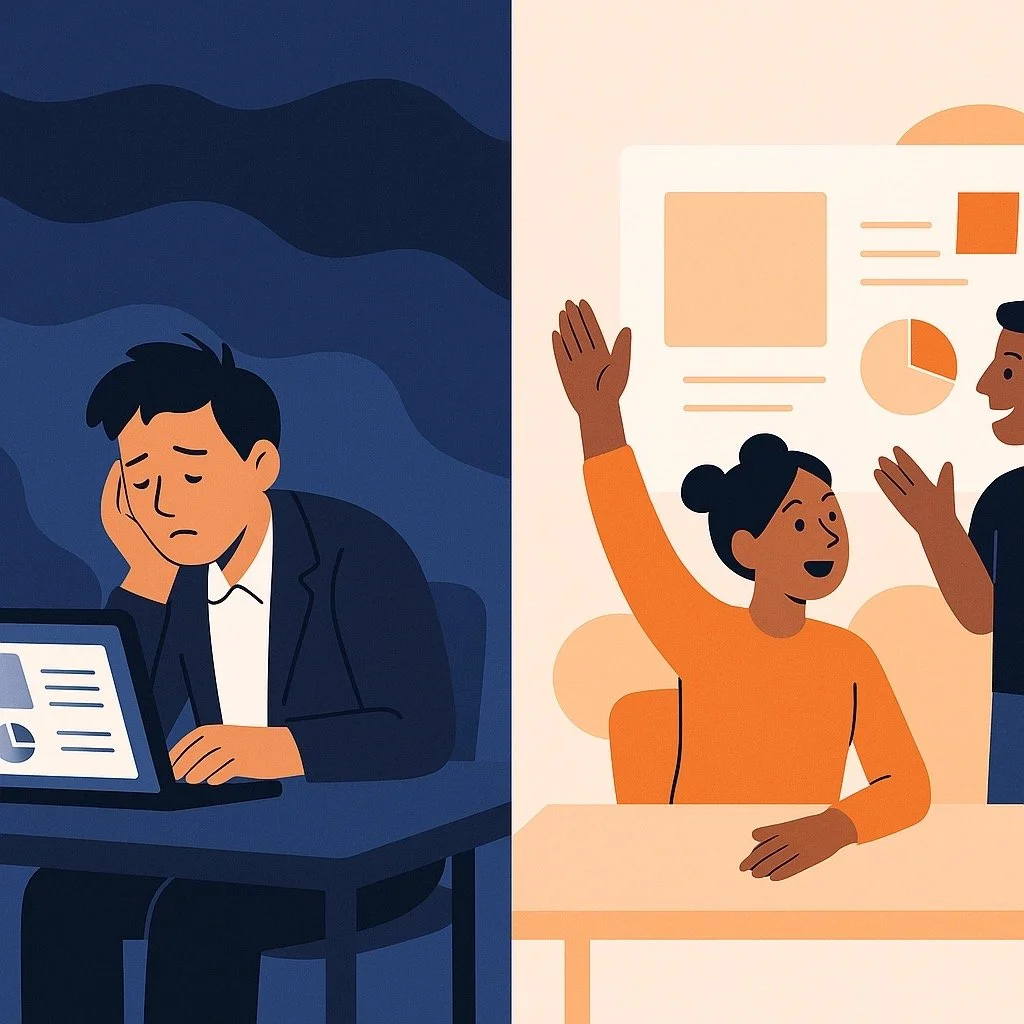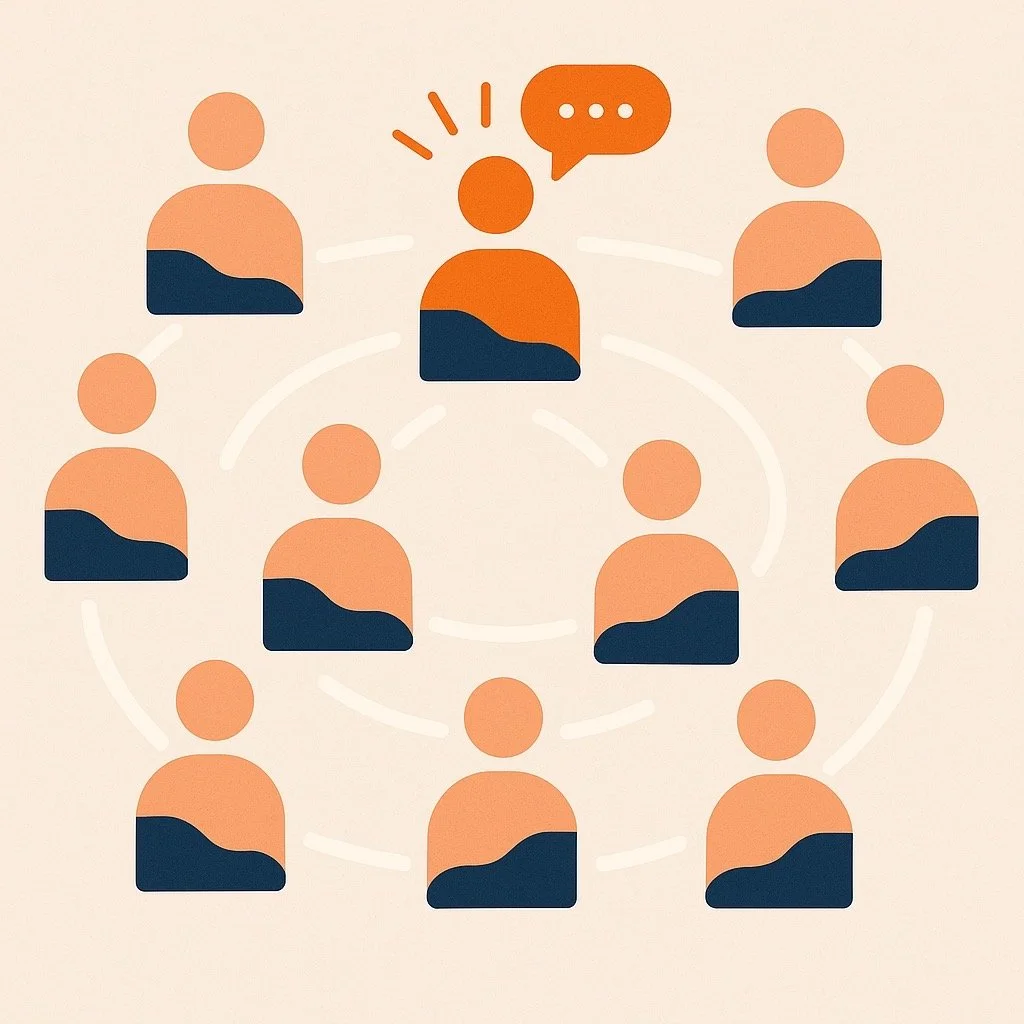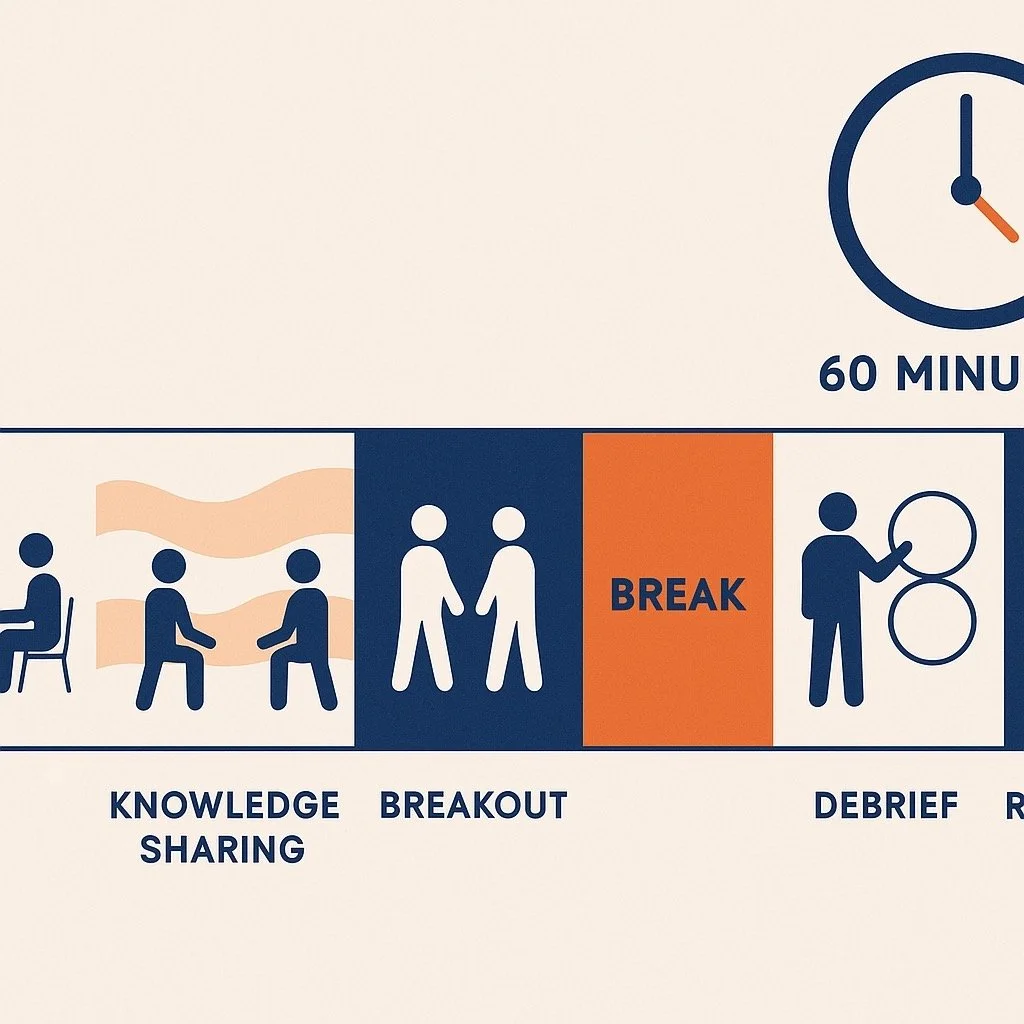From Zoom Fatigue to Team Synergy: Human-Centric Workshops that Actually Work
The Zoom Zombie Apocalypse Is Real
Let's face it—we've all been there. That glazed-over look after your fourth video call of the day. The weird exhaustion that somehow feels more intense than in-person meetings ever did. The desperate urge to switch your camera off and just... exist... without being perceived for five blessed minutes.
Zoom fatigue isn't just a catchy phrase; it's a documented phenomenon that's been draining teams since the great remote work revolution. Studies show that the constant self-view, excessive eye contact, reduced mobility, and cognitive overload from virtual communication are literally rewiring our brains—and not in the cool sci-fi upgrade kind of way.
But here's the good news: the solution isn't fewer meetings or more caffeine. It's different meetings. Human-centric workshops that acknowledge we're people first, employees second.
Why Traditional Training Makes Everything Worse
Picture this: It's Monday morning. Your team is already feeling the weight of the week ahead. And now they're staring down the barrel of a three-hour training session that promises to be as exciting as watching digital paint dry.
Traditional corporate training—with its lengthy PowerPoints, passive learning, and information overload—is the perfect recipe for disengagement. In the virtual world, it's even worse. When cameras go off and microphones stay muted, you might as well be broadcasting into the void.
The Microlearning Revolution (and Why Our Workshops Are Intentionally Brief)
At Chatterbox Workshops, we've built our entire approach around a simple truth: humans learn better in short, focused bursts with high engagement rather than marathon sessions with diminishing returns.
This isn't just a hunch—it's backed by science. The average adult attention span for focused learning maxes out at about 20 minutes before the brain needs a reset. That's why TED talks are 18 minutes, why the best teachers chunk information, and why our workshops are deliberately designed to be short, sharp, and to the point.
As Kerst Dance from RACV observed after one of our sessions:
"The session brought our team closer together through meaningful activities that highlighted the power of active listening and authentic communication."
The secret? We apply microlearning principles—focused content, interactive delivery, and immediate application—to create experiences that stick without exhausting participants.
The Human-Centric Workshop Formula That Actually Works
So what exactly makes a workshop "human-centric"? It's not just about shorter sessions (though that helps). It's about recognizing and designing for the way humans naturally connect, learn, and collaborate.
Here's our formula for workshops that transform Zoom fatigue into team synergy:
1. Start with Genuine Connection
Before diving into content, create space for authentic human moments. This isn't about awkward icebreakers that make everyone cringe. It's about structured but genuine check-ins that acknowledge we're people with lives, not just boxes on a screen.
Try this: Begin with a quick round of "What's your energy level today on a scale of 1-10?" It takes 30 seconds per person but instantly creates shared awareness and adjusts expectations.
2. Design for Active Participation, Not Passive Consumption
In traditional training, about 20% of participants do 80% of the talking. In an effective workshop, everyone contributes. Period.
We use breakout rooms strategically, digital collaboration tools, and structured activities where every voice matters. When people move from audience to participant, engagement skyrockets.
3. Incorporate Gamification (Without the Cringe)
Gamification isn't about childish point systems or meaningless badges. It's about tapping into our natural desire for challenge, feedback, and progress.
In our workshops, we use friendly competition, unexpected twists, and playful challenges to keep energy high. The result? Even serious topics become memorable experiences rather than information to be endured.
As Sarah Jane from Australia Charities and Not-for-Profits Commission put it:
"Easily one of the best training sessions we've had. I've been recommending it to everyone!"
4. Create Psychological Safety Through Structure
The paradox of effective workshops is that people feel most comfortable being vulnerable when there's clear structure. Vague instructions like "just share your thoughts" create anxiety. Specific prompts with clear parameters create freedom.
Every activity in our workshops has precise instructions, time limits, and defined outcomes—which counter-intuitively creates more authentic interaction, not less.
5. Build in Recovery Time
Zoom fatigue happens because virtual communication requires more focus than in-person interaction. Our brains are working overtime to process non-verbal cues, manage technical hiccups, and stay engaged.
We build in strategic breaks, shift between different types of activities, and vary the pace to prevent the cognitive overload that leads to that zombie-like state.
From Theory to Practice: What This Looks Like in Reality
Let's translate these principles into a practical example. Here's how we might structure a 60-minute workshop on improving team communication:
0:00-0:05: Quick individual check-ins with a specific prompt related to communication ("What's one communication win you had this week?")
0:05-0:15: Introduction of a simple framework with interactive elements (participants respond in chat or on a shared board)
0:15-0:30: Breakout activity in pairs with a specific challenge and deliverable
0:30-0:35: Energy break (quick stretch, water, reset)
0:35-0:50: Whole group debrief with structured sharing (not just "any thoughts?")
0:50-0:60: Individual application planning and commitments
Notice what's missing: lengthy theory explanations, passive listening stretches, and generic discussion. Every minute is intentional, active, and designed with human attention spans in mind.
The Ripple Effect: Beyond the Workshop
The real magic happens after the workshop ends. When teams experience genuine connection and engagement during training, it creates a template for how their regular meetings and collaborations can feel.
Teams start incorporating check-ins before diving into agenda items. They become more intentional about meeting length and format. They prioritize psychological safety and active participation. And gradually, the Zoom fatigue that once plagued their days begins to lift.
This isn't just about making training less painful—it's about transforming team culture through the experience of a better way of working together.
Start Small, Start Now: Three Things You Can Implement Today
Ready to shift your team from Zoom zombies to engaged collaborators? Here are three simple practices you can implement immediately:
The 45-Minute Meeting Rule: Cap all virtual meetings at 45 minutes instead of an hour. Use the extra 15 minutes for recovery, prep for the next meeting, or simply to breathe.
The Connection Before Content Principle: Start every team interaction with 3-5 minutes of structured connection before diving into work topics. Use specific prompts rather than open-ended "how are you?"
The Participation Pledge: For your next team discussion, create a structure where everyone speaks at least twice. This might mean going around for quick thoughts, using breakout rooms, or simply being more intentional about inviting quieter voices.
Ready for the Next Level?
If you're intrigued by the human-centric approach to team development, you might be interested in our blended learning approach that combines the best of various methodologies to create lasting change.
Or maybe you're ready to experience one of our workshops firsthand? We'd love to show you how engaging, energizing, and effective corporate training can be when it's built around human connection rather than content delivery.
Either way, the journey from Zoom fatigue to team synergy begins with a single step: acknowledging that we're humans first, employees second, and designing our interactions accordingly.
The days of the Zoom zombie apocalypse are numbered. Human-centric workshops aren't just a nice-to-have—they're the future of how teams learn, grow, and thrive together.




